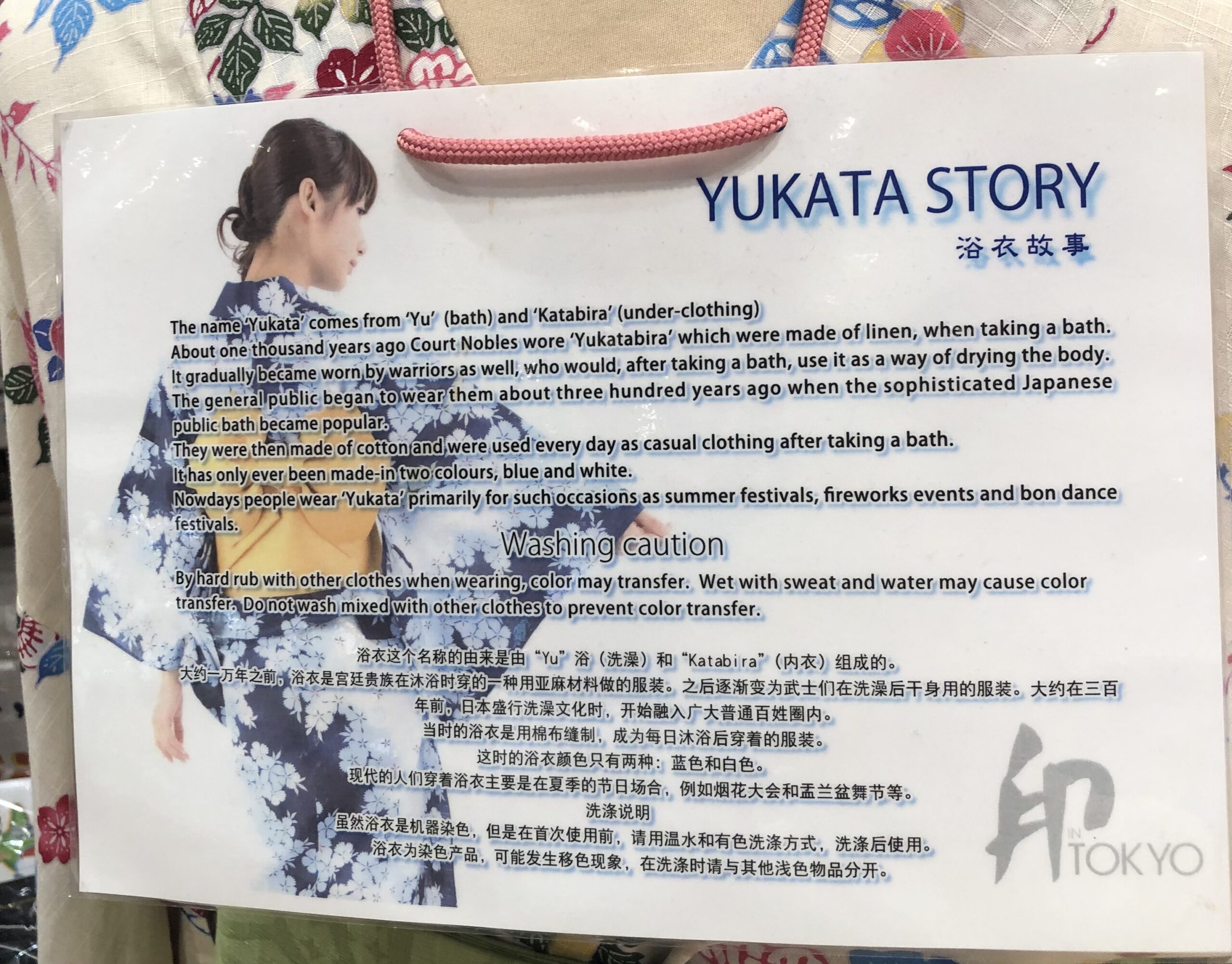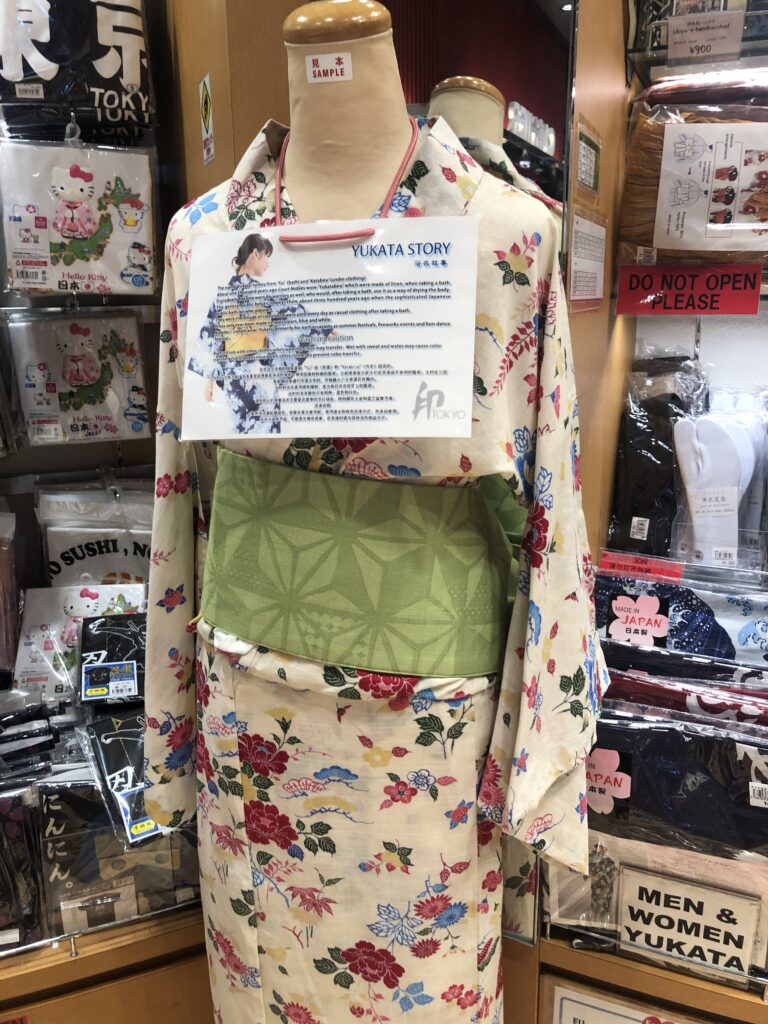
While visiting Japan, the first thing you might notice is a lot of people styled and dressed in traditional Japanese kimonos and geta (wooden clogs). In Kyoto, this might be a more noticeable sighting since geisha culture is more prominent and is still active among the Japanese locals.
Tourists are also interested in traditional clothing and sometimes will have their whole families dressed in beautifully patterned kimonos, obi (sash around the waist), geta (wooden shoes) and the women will typically wear styled wigs with a hair accessory.
Kimonos have made their way to the United States and have become one of the most recognized pieces of Japanese culture. People all over the world think of kimonos almost immediately when Japan is brought up in conversation.
Kimonos are a cherished part of Japanese culture. There are almost a dozen more versions of Japanese kimonos such as yukata. Many have never heard of any other articles of clothing except the kimono. So, where did this come from?
The kimono
Around the Heian Period (794-1192) is when kimonos started to blossom in Japanese culture. Japan was slowly emerging from Chinese rule, and literature and arts were more popular and booming. It first started out as a unisex article of clothing that was straight-cut to fit every body shape. In the Edo Period, the kimono was altered to have smaller sleeves and armholes. Everyone in Japan wore a kimono during the Edo Period, and it became a staple in Japanese daily life.
In the present day, kimonos have become more expressive of individuality. There are so many patterns to choose from. Kimonos can be custom-made. It is still a very unisex piece of clothing but it has even branched out to foreigners, which was not common in the Edo era.
Kimonos have always been made from silk which is a big difference when compared to yukata. They are lined on the inside to have a protective layer from body oils ruining the silk. While you can wear kimonos on daily outings, it is less common now in Japan.
Kimonos are typically worn during formal ceremonies such as tea ceremonies. They are also worn at Shinto shrines or Buddhist temples for special occasions. Kimonos are usually reserved for spring, fall and winter seasons when there is cooler weather.
The yukata
There are key differences that separate a yukata from a kimono.
One way you can tell them apart is what material it is made from. Yukatas are usually made from cotton or linen (sometimes polyester) as they were originally created as bath robes for onsen (public baths).
They also have shorter sleeves than a typical kimono and do not drop down to the wrists. It is said that they began to arise in the Kamakura Period (1192-1333) as a way to absorb sweat when taking a bath at an onsen. They were only available in the solid color of indigo but in later years were also available in various patterns.
Today,yukatas are now more appropriate to wear on a daily outing as compared to kimonos. Especially in the summer, yukatas are common to wear to festivals and on a hot day. An obi sash is still worn with a yukata, but socks are not worn, which is another giveaway.
There is one key similarity between a yukata and a kimono. When tying the robe around the body the left side goes over the right!
The artistry of Japanese clothing is something that appeals to people all over the world. International visitors are seen wearing a kimono on many streets of Japan in appreciation of the culture and the beauty that comes with wearing it.
On your next visit to Japan, be sure to check out the boutiques for a custom kimono or yukata.









